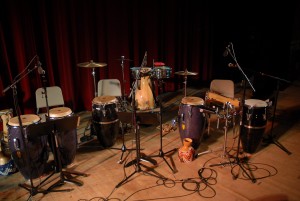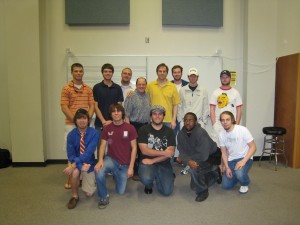
I first heard a frame drum at the 1982 Percussive Arts Society International Convention in Dallas, TX. It wasn’t just the amazing variety of sounds Glen Velez got out of a single drum that riveted the audience in that memorable performance. I have never heard any musical instrument played more expressively. Glen’s performance that day raised the bar for me in terms of musical expression. To this day it remains one of the most memorable and inspiring performances I have ever witnessed.
It wasn’t long before Remo came out with a line of frame drums and percussionists started buying them up like hotcakes. My students and I got tars, bodhrans, and riqs and then wondered what to do with them! I began to keep a little notebook in which I notated grooves as I improvised on the drums.
My first composition for a frame drum was actually a transcription of an improvised performance. I had been invited to perform the prelude to a world communion church service. Instead of the usual organ prelude, I played an improvisation on a tar in a style I considered appropriate to the spirit of the occasion. Following the service, I remember one very large man who approached me with what I thought was an angry look on his face. I feared he was offended by my having played a drum in a church service. As he shook my hand, he moved closer and embraced me saying, “That was the most reverent thing I’ve ever heard!” Later on, I wrote down what I had played and called the piece Quatrinity. It was the first of what would become Four Solos for Frame Drums, to my knowledge the first published collection of solos for the instrument. The only work I know of that preceded it was John Cage’s Composed Improvisation for Frame Drum, written for Glen Velez in 1988.
My compositions for frame drums are informed by my experience in American rudimental drumming, some traditional Arabic rhythms, a little South Indian influence borrowed from Glen Velez and N. Scott Robinson, and my own experience with West African drumming. Quatrinity, for example, uses 5-stroke rolls, ruffs, and 11-stroke rolls (executed with the fingers) from rudimental drumming, one-handed kanjira “rolls” from South Indian drumming, and the ubiquitous gankogui bell pattern from West Africa. One of my most recent compositions, Rhythmic Journey No.1 : Conakry to Harare for tar, employs traditional djembe rhythms from Guinea, West Africa sandwiched around a brief reference to the traditional rudimental snare drum solo, Three Camps, before moving on to rhythms derived from a traditional kalimba tune called “Chigwaya” from Zimbabwe and a tune for mbira dzavadzimu titled “Kuzanga.” My first solo for riq, Another New Riq, was influenced almost entirely from the rhythmic feel of the Malinke dance rhythm “Manjani,” even though there aren’t any direct quotes from the original dance rhythm in the piece.
One of my favorite compositions that I don’t think has been performed very often is Etude in Arabic Rhythms from Four Solos for Frame Drums. It’s a great introduction to seven traditional Arabic rhythms: “Dawr Hindi,” “Malfuf,” “Maqsum,” “Saudi,” “Chiftetelli,” “Nawwari,” and “Masmudi.”
Nearly all my frame drum works were written for my students to play on their degree recitals. Way back in the ‘80s, when I was so enthralled with this amazing “new” medium of musical expression, I began writing pieces for the simple reason that my students and I didn’t have any pieces to play on these extraordinarily versatile instruments. I have since encouraged my students to transcribe rhythms, keep their own notebooks of grooves, and compose their own pieces. My best advice is, “If I can do it, you can do it!”
Playing frame drums for me is a visceral experience unmatched by any experience I’ve ever had playing stick drums. There is something about having direct contact with the membrane, and the feel of the various sounding areas of the drum, that seems to put my entire body into vibration. I wanted to give my students an opportunity to have that kind of visceral experience, so I wrote some pieces for them. In the process, I developed an eclectic compositional style that drew on my experiences as a percussionist playing a large variety of music from a wide cultural, geographical, and historical range. Come to think about it, maybe that’s what being a percussionist is all about.
BMW









Recent Comments